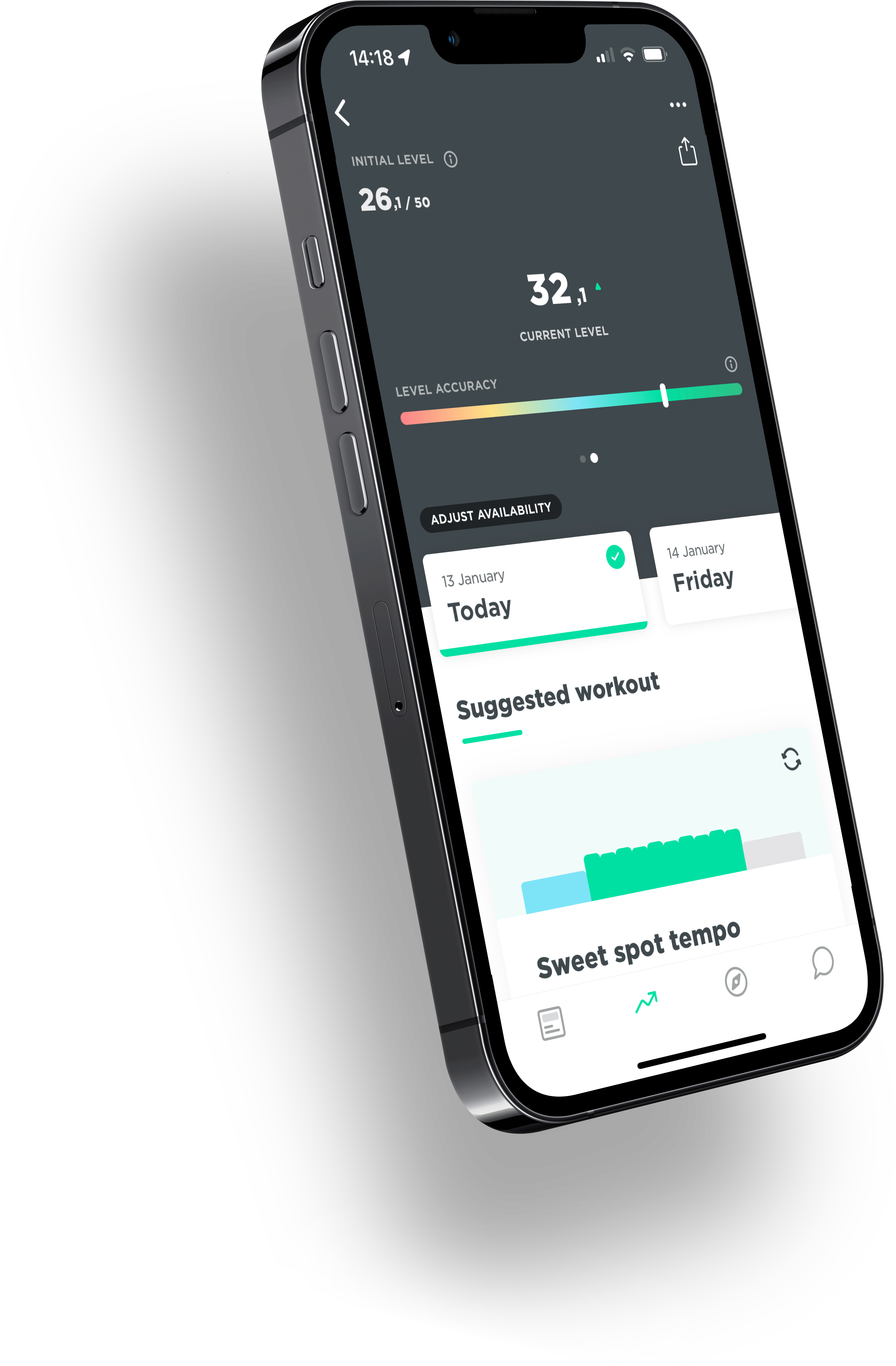In a previous article we discussed the Critical Power model. This model consists of two components. In the Critical Power article we focused mainly on the aerobic component, in this article we look at the other one, the anaerobic work capacity component. This anaerobic work capacity is especially important during short, intensive efforts. Think a short, steep climb, or an attack in the last kilometers of a race.
Anaerobic energy tank
Anaerobic work capacity (also called AWC or W’) can best be seen as an energy tank that represents the size of your anaerobic energy system. The larger this tank, the more power you can release above your Critical Power level. So you have power over short efforts of a few minutes, but also more power over a longer duration, like the 20-minute test that we referred to in the previous article. To calculate how much ‘anaerobic’ energy you can release we need to know the exact size of your AWC tank. The amount is calculated as an amount of kJ (kilojoules). When this AWC tank is empty you are no longer able to ride above your threshold point and you will have to recover before you can go back above it. The body recovers from an anaerobic effort via the aerobic system, which can, among other things, burn the lactate aerobically and thereby ‘refill the tank’.
The bigger the better?
We now know that AWC is very important for (repetitive) short efforts. It is therefore easy to think that the bigger this tank, the better it is. To a certain extent this is true. However, the body is so adaptive that one comes at the cost of the other, so an increase in AWC can go at the expense of your FTP. This is because the body produces lactate faster when it becomes more anaerobic; therefore, it will tend to produce more and faster lactate at lower intensities.
Whether it is advisable and important to increase your AWC depends entirely on your goal. If you are training for a long cyclo, it is smarter to make sure you are aerobically fit and you need to focus less on AWC. If you are training for a short criterium of an hour, then the anaerobic energy is basically all that matters!
For example, if we look at a 20 minute test (1200 seconds), a person with a low AWC (12000 KJ) can release 10W ‘anaerobically’ over 20 minutes (12000 KJ/1200 sec= 10W). A person with a very high anaerobic capacity (36000 KJ) can release 30 W over these 20 minutes (36000/1200=30W). If both persons can ride at a 300W average over 20 minutes this means a Critical Power of 290W for one and 270W for the other. A substantial aerobic difference!
How do I train awc?
Because these are very intensive efforts, it is important that you are rested and fresh when you start these training sessions. In addition, you should also ensure that you are fully recovered when you start the next repetition, so the rest between the blocks is very long. Think of blocks of 30 sec to 2 minutes full throttle, after which you cycle for 5-10 minutes on low intensity to work the lactic acid back out of the legs. Strength training in the gym can also increase your anaerobic work capacity.
The great advantage of the anaerobic system is that it responds very quickly to training, it is really a matter of a few weeks before this system has improved. The aerobic system takes much more time to develop.
Conclusion
The importance of anaerobic energy depends on your goal. An increase in the anaerobic system can go at the expense of the aerobic system, so it is important to plan the training plan with care. Always consider in which phase you should schedule the anaerobic workouts and make sure that you do them fresh and rested! In addition, the calculations of performance and energy systems are obviously a model, whose calculations are much dependent on the quality of the input. So look critically at your data before drawing conclusions.



